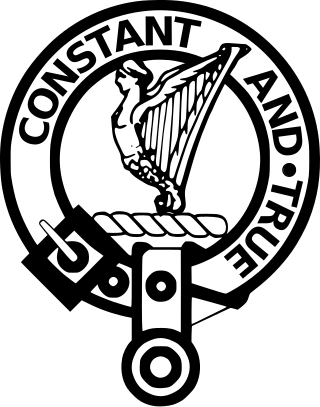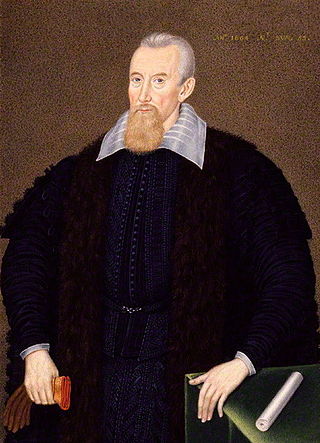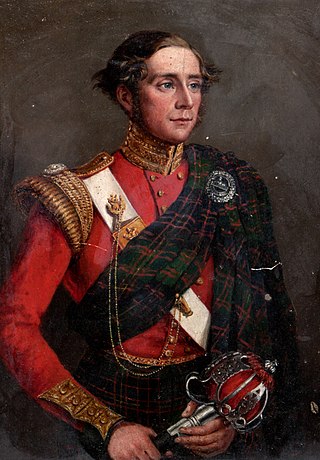Location of the barony
The boundaries of the Barony have changed over the years but at one point it included Kinloss Abbey and its lands, the town of Kinloss, the lands and town of Muirton, the towns of Blackstob and Hatton, and the burgh of barony of Findhorn, including the mouth of the Findhorn River and the adjacent coast "lying in the ancient Sheriffdom of Elgin and Forres". [3] [4] This is roughly the area from the ruins of the abbey, to Kinloss Golf Course, to the burgh of Findhorn and encompassing Kinloss Barracks on a modern map.
Abbey of Kinloss
The Abbey was founded in 1150 by David I for monks of the Cistercian order. The original monks were from Melrose Abbey. [5] (Wiki). The Abbey was granted valuable salmon fishing rights on the Findhorn river by Robert the Bruce in 1312 and went on to become one of the largest and wealthiest religious houses in Scotland.
The most renowned of the Abbots was Robert Reid, who erected several buildings at the abbey, including the library. Upon his death, he donated his estate to found the University of Edinburgh.

The Abbey was not originally part of the Barony, but the first known Crown Charter for the Barony of Muirton was granted to Robert Reid on 16 May 1532.[ citation needed ] By 1611 both the Abbey lands and the Barony of Muirton were included in the Lordship of Kinloss. A Charter of Novadamus granted to Sir Robert Innes of Muirton in 1632, formed various properties in the Lordship of Kinloss, including the abbey and the land of Muirton, into a larger Barony of Muirton.
After the Reformation in Scotland in 1560 the abbey was abandoned. Much of the stone from the buildings was taken by Cromwell in 1650 to build the Citadel in Inverness. Ruins of some of the buildings still remain and are part of a local cemetery. [6]
Burgh of Barony of Findhorn
Findhorn "appears to have always been … a part of the Barony of Muirton". [7] It is one of the oldest seaports on the coast of the Moray Firth and was a trading port for exporting grain and timber to Holland and Flanders and importing wine and merchandise. There was significant salmon fishing at the mouth of the river and herring fishing at sea. In the seventeenth century it was the principal seaport for Moray, but trade to Findhorn declined over the years as the harbour was not able to handle the increasing size of trade vessels.
Findhorn was erected into a burgh of barony in 1661 by act of Parliament. [7] It is located on the east side of the mouth of the Findhorn River. Apparently, the original town was one and a half miles northwest and was cut off and inundated by the sea in 1701, due to the shoreline eroding and shifting. [7] [8] The overwhelming of the adjacent Barony of Culbin by drifting sands happened contemporaneously. [9]
Today the town is a dormitory suburb for Forres? or Inverness? with moorings for leisure craft. Findhorn Ecovillage, near the town, is an intentional community begun in 1962 and then continued as a sustainable development with the formation of the Findhorn Foundation in 1972. [10]
RAF Kinloss and Kinloss Barracks
In 1938, with the advent of WWII, much of the land of the barony was requisitioned (compulsorily purchased) by the government to build a new Royal Air Force base, RAF Kinloss. The airbase opened as a flight training centre in 1939 with three 1000m grass runways. By 1940 Bomber Command had taken over operations and in 1942 the runways were paved, and the main runway extended to 1800m.
After the war, the mission of the base changed to anti-submarine warfare and search and rescue under Coastal Command. In 1997 the UK Aeronautical Rescue Coordination Center was moved to RAF Kinloss and continued there until 2016.
In 2012, control of the base was transferred to the British Army and it became known as Kinloss Barracks. Two regiments of Royal Engineers are currently based at Kinloss Barracks, 39th and 71st (Reserve). It is also home to a receiver station of the Defence High Frequency Communications Service. The airfield is still maintained as a relief field and for temporary deployment of aircraft from RAF Lossiemouth.
Town of Muirton

James Calder of Muirton was granted a charter by Charles II in 1674 allowing him to use some of the lands of Muirton to create a burgh of barony of Muirton, with a weekly market on Thursdays and two annual fairs. [11] An Ordnance survey map in 1870 shows a few buildings labeled "Muirtown" at a site that is now the southeast corner of Kinloss Barracks(see below). [12]
Town of Kinloss
A charter by James IV in 1497 granted the Abbots of Kinloss a burgh of barony for the "town before the gate of the monastery". A market was permitted on Tuesdays and fairs every year at the feast of the Assumption and Candlemas. [11] [13]
The population of the town does not appear to have changed much over the last few centuries, as in 1755 was 1119, in 1841 it was 1202 and the current population is 1420. [14] [15]
The modern town is situated adjacent to Kinloss Barracks.

















